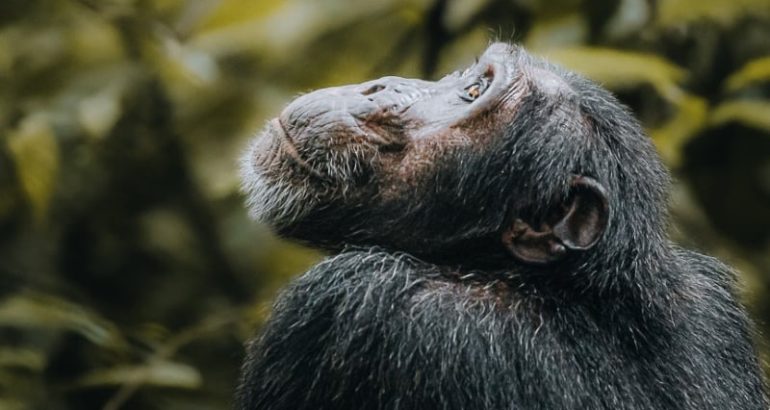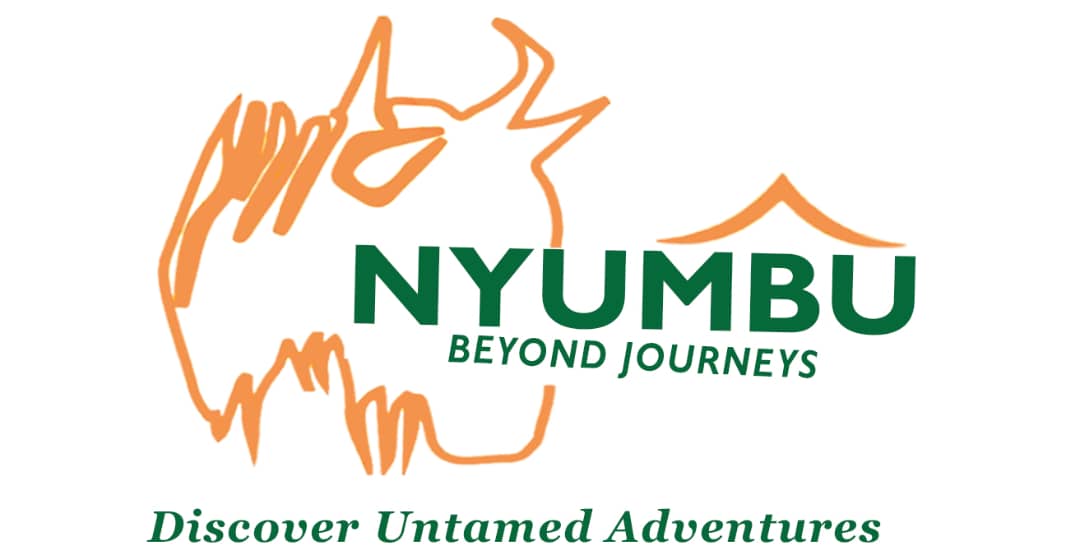
About
We pride ourselves on our passion for East Africa, her animals, wild spaces and Culture, amazing people.

© Copyright 2025 Nyumbu Beyond Journeys. All Rights Reserved

By no means a support act to the gorillas, Uganda’s chimps are a draw in their own right. Occupying different habitats to the gorillas and living within distinct social structures, the chimps are close to us – not just in terms of DNA. They have a dark side that enthrals just as much as their more charming characteristics.
Introduction to chimpanzee trekking in Uganda
Uganda is unique in its ability to combine a huge diversity of wildlife and safari experiences along a single itinerary.
Chimp tracking in Uganda is one of the most remarkable wildlife experiences available on the continent.
There are 3 major chimp trekking destinations in Uganda: Kibale Forest National Park, Murchison Falls National Park, and Queen Elizabeth National Park.
Kibale Forest is the best place for chimp trekking, as the forest has high population densities and sightings are most common here.
What is chimpanzee trekking?
Chimpanzee trekking, one of the most popular wildlife activities in Uganda, allows you to step into the world of chimpanzees in the wild. Uganda Wildlife Authority Interpretive Rangers lead a small group (maximum of 8) into the realm of the chimps.
The treks last about three hours and include a maximum of one hour with the chimps, during which you can expect to see them from a safe but intimate distance of 8-10 metres. Get up close and personal with the chimpanzees and discover their beauty, intelligence, and social structures.
What is chimpanzee habituation?
Chimpanzee habituation is a fully immersive experience. You can join the researchers of the habituation team for a half or full day excursion deep into the forest. These chimps are less used to human presence and so the experience is more unpredictable.
Whilst it can be challenging to follow the lead of these agile primates, the experience is thoroughly rewarding.
The main difference between the standard chimp treks and the habituation experience is how long you spend with the chimps. The habituation experience allows you to spend much longer in the company of the chimps.
Where can I go chimpanzee trekking in Uganda?
Kibale National Park
Home to around 1,500 chimpanzees, Kibale Forest National Park is the main chimpanzee trekking destination in Uganda.
Located in South-West Uganda, the rainforest is easily accessible from Kampala or Entebbe.
The forest has excellent chimp populations, and the park has become synonymous with chimpanzees. The chances of sightings here are at 90% or more, and the park sits along the south-western safari circuit so is easy to combine with other experiences.
The tracking excursions depart twice a day at 08:00 and 14:00 and the morning excursions are busier since many itineraries combine it with an afternoon visit to the Bigodi Wetland Sanctuary.
Tracking permits are required, and they can be booked through the Uganda Wildlife Authority.
Chimp habituation experiences are also available at Kibale. For those joining for the full day, you will join the chimps from when they break nests at about 06:30 until they nest again for the night at about 19:00.
Budongo Forest Reserve, Murchison Falls National Park
Murchison Falls National Park is Uganda’s best safari destination.
The sheer diversity of experiences on offer here is incredible. A single visit can combine game drives, boat cruises, chimp trekking, hikes to epic waterfalls and landscapes, and sundowners at boutique lodges overlooking the savannah.
In the wooded south of the beautiful park, the Budongo Forest Reserve is an excellent location for chimpanzee tracking.
Budongo’s contact rate is about 80% which is higher than that of Kyambura Gorge in Queen Elizabeth National Park. Whilst sighting chances are higher at Kibale, the lower visitor numbers makes the experience more personal. Tracking permits can be booked through the National Forestry Authority.
The guiding is particularly good at Budongo, and up to 6 guided groups of 3 people track the chimps each morning and afternoon.
The centre’s historical association with the Jane Goodall Institute means that the interpretive guides are excellent at telling the wider story of the chimps and the forest.
A classic tracking excursion lasts around three hours and contact is usually made after only an hour of walking. A full day habituation experience is also available here for adventurers who seek an extended encounter with the chimps.
Kyambura Gorge, Queen Elizabeth National Park
Park
A delightfully secret cleft in the surface of the otherwise flat savannah bordering Queen Elizabeth National Park, Kyambura Gorge is the third most popular chimp trekking destination in Uganda.
Situated in the far east of the Queen Elizabeth National Park, Kyambura Gorge is nicknamed ‘the valley of the apes’. The product of centuries of erosion by the Kyambura River, the dense forest which covers the gorge sides is a prime habitat for chimpanzees.
As an experienced Ugandan Wildlife Authority guide leads you into this secret forest, you will feel like you have entered another world.
Only 17 chimps inhabit the gorge and the chances of seeing them are about 60%. The sights and sounds of the forest generate suspense and make a sighting even more rewarding. Tracking permits can be booked through the Uganda Wildlife Authority (if you book with us all of this is taken care of for you).
Kyambura Gorge is usually included as an add-on to an existing safari at Queens, as the park has excellent bio-diversity so is usually visited for game drives, boat cruises, and for the tree-climbing lions in Ishasha Sector of the park.
Semuliki Wildlife Reserve
In the western corner of Uganda, the Semliki Valley is home to a small population of chimpanzees.
Don’t expect it to be easy to find the chimps in Semliki. The dry and sparse forest environment means they have to roam far and wide to secure enough food.
The research programme here is on the cutting edge as they try to work out the relationship between the chimps walking on two legs and the evolution of our own specie
When is the best time to go chimpanzee trekking in Uganda?
The best time to go chimpanzee trekking in Uganda is during the dry seasons of June to September and December to February.
Uganda is a year-round destination. Its equatorial climate means that temperatures are consistent throughout the year. Uganda’s seasons are separated by varying levels of rainfall. March to May is the long rainy season, and October to November is the short rainy season.
Trekking conditions are easiest during the dry seasons of June to September and December to February. The clear, sunny weather should make your trek more enjoyable, but downpours are still possible due to Uganda’s tropical climate.
Uganda’s peak tourist season is June to September and the cost of accommodation is raised to meet the increase in demand. If you are comfortable with difficult trekking conditions, visiting during the rainy seasons can reduce the cost of your trip.
Permits are cheaper and easier to secure during the rainy seasons due to the lower demand.
How difficult is chimpanzee trekking in Uganda?
Chimpanzee trekking in Uganda requires a moderate level of physical fitness since treks are around three hours long.
Unlike gorillas, chimpanzees typically live at low altitudes and the gentle terrain will allow you to focus your attention on the chimpanzees. However, chimpanzees are highly active and can dart through the forest. You should be comfortable with moving quickly at short notice to keep up with them.
The trek will mainly follow forest trails, but you should be prepared to traverse the undergrowth if the chimpanzees are located away from the trails. During the rainy season, the trails will be more slippery, and the forest will be denser. This will increase the difficulty of the trek.
Book your chimpanzee trekking safari to Uganda with us @ Nyumbu Beyond Journeys.
We pride ourselves on our passion for East Africa, her animals, wild spaces and Culture, amazing people.

© Copyright 2025 Nyumbu Beyond Journeys. All Rights Reserved
